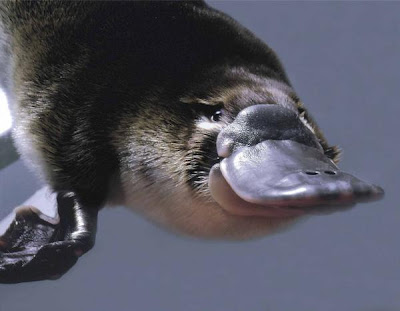 |
| Platypus [Credit: Web] |
University of Adelaide geneticist Associate Professor Frank Grützner says the project used new sequencing technology to reveal for the first time all the genes active in tissues such as the brain, testes, kidney, and heart and liver in different species, including humans, chicken, mice, opossum and platypus.
Dr Grützner was one of the key collaborators on the study which was led by Associate Professor Henrik Kaessmann from the University of Lausanne in Switzerland.
"We have seen many genome sequencing projects over the past decade but until now nobody has tackled the big question of how the regulation of genes has changed during 200 million years of mammalian evolution," Dr Grützner says.
"In some tissues more changes have occurred than in others. For example, in the brain we observed fewer changes compared to the testes, suggesting that changes were more subtle in the brain."
Dr Grützner says Australia's monotremes - the platypus and echidna - have already revolutionised our understanding of the origin of our sex chromosomes.
"We already know that our sex chromosomes emerged after the separation of monotremes from other mammals. This allowed us to examine in this study how the activity of genes changes once they found themselves on a sex chromosome.
"The inclusion of the platypus as our most distant mammalian relative was particularly important in this study. This work also creates another fantastic resource from which we can set out to better understand the extraordinary biology of these iconic animals.
"One gene that shows much higher activity in the platypus brain is known to be involved in explorative behaviour in mice and it is tempting to speculate that this has to do with the intense foraging style that we can observe in the platypus," says Dr Grützner.
This work follows recent high-profile research on platypus sex chromosomes and the Platypus Genome Project, both published in Nature in 2004 and 2008.
"It not only shows the importance of monotremes for understanding mammalian evolution but also provides new clues about genes underlying the fascinating biology of monotremes," Dr Grützner says.
The University of Adelaide
Source: The
Archaeology News Network
No hay comentarios:
Publicar un comentario